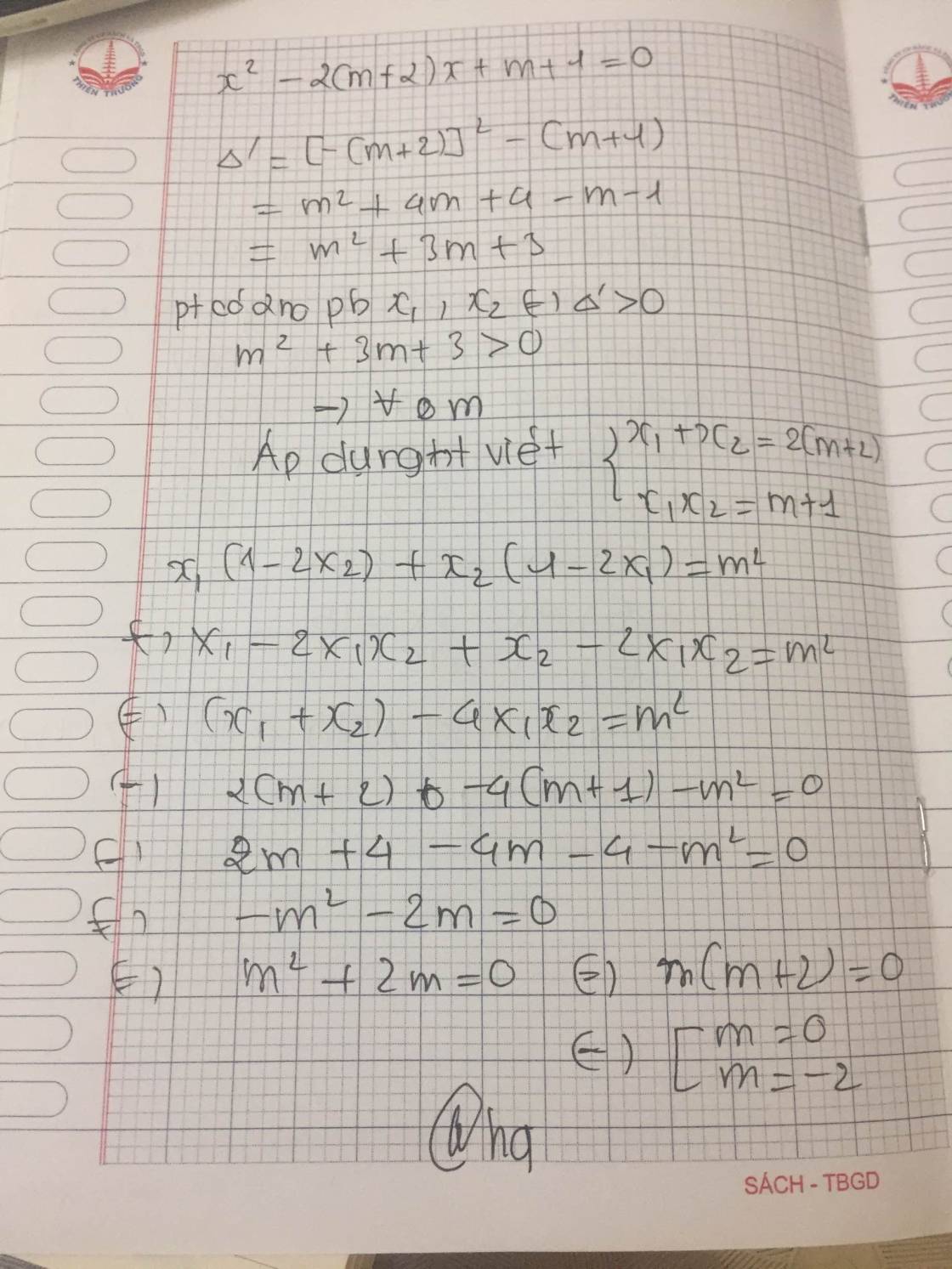Hãy nhập câu hỏi của bạn vào đây, nếu là tài khoản VIP, bạn sẽ được ưu tiên trả lời.

a, \(x^2-3x-6+4=0\)
\(\Leftrightarrow x^2-3x-2=0\)
Ta có : \(\left(-3\right)^2-4.\left(-2\right)=9+8=17>0\)
Nên có 2 nghiệm phân biệt
\(x_1=\frac{3-\sqrt{17}}{2};x_2=\frac{3+\sqrt{17}}{2}\)
b, Để PT có nghiệm thì \(\Delta=0\)
\(\Leftrightarrow b^2-4ac=0\)
\(\Leftrightarrow\left(-3\right)^2-4\left(-m+4\right)=0\)
\(\Leftrightarrow9+4m-16=0\)
\(\Leftrightarrow7+4m=0\)
\(\Leftrightarrow m=-\frac{7}{4}\)
Vậy => m = -7/4
c, Ko rõ

a: Th1: m=0
=>-2x-1=0
=>x=-1/2
=>NHận
TH2: m<>0
Δ=(-2)^2-4m(m-1)=-4m^2+4m+4
Để phương trình có nghiệm duy nhất thì -4m^2+4m+4=0
=>\(m=\dfrac{1\pm\sqrt{5}}{2}\)
b: Để PT có hai nghiệm phân biệt thì -4m^2+4m+4>0
=>\(\dfrac{1-\sqrt{5}}{2}< m< \dfrac{1+\sqrt{5}}{2}\)

\(\Delta=\left(2m+1\right)^2-4\left(m^2+m-2\right)=9>0;\forall m\)
Phương trình luôn có 2 nghiệm pb với mọi m
Theo hệ thức Viet: \(\left\{{}\begin{matrix}x_1+x_2=2m+1\\x_1x_2=m^2+m-2\end{matrix}\right.\)
\(x_1\left(x_1-2x_2\right)+x_2\left(x_2-2x_1\right)=9\)
\(\Leftrightarrow x_1^2+x_2^2-4x_1x_2=9\)
\(\Leftrightarrow\left(x_1+x_2\right)^2-6x_1x_2=9\)
\(\Leftrightarrow\left(2m+1\right)^2-6\left(m^2+m-4\right)=9\)
\(\Leftrightarrow2m^2+2m-4=0\)
\(\Rightarrow\left[{}\begin{matrix}m=1\\m=-2\end{matrix}\right.\)


Thay m = -1 ta đc
\(\left(-1-1\right)x^2+2x+1=0\)
\(-2x^2+2x+1=0\)
\(\Delta=2^2-4.\left(-2\right).1=4+8=12>0\)
Nên phương trình có 2 nghiệm phân biệt
\(x_1=\frac{-2-\sqrt{12}}{2.\left(-2\right)}=\frac{-2-\sqrt{12}}{-4}=\frac{1+\sqrt{3}}{2}\)
\(x_2=\frac{-2+\sqrt{12}}{2.\left(-2\right)}=\frac{-2+\sqrt{12}}{-4}=\frac{1-\sqrt{3}}{2}\)